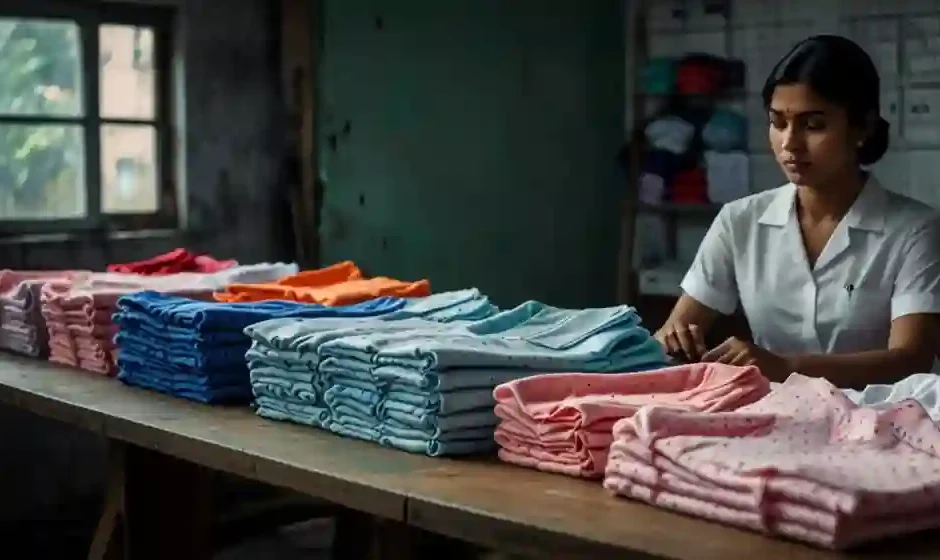Bangladesh is a global hub for garment manufacturing, including the production of underwear and intimate apparel. As the second-largest apparel exporter globally, the country is home to numerous factories specializing in high-quality, cost-effective products. However, to ensure the industry continues to thrive and meets the growing demands of international markets, teaching manufacturers modern techniques, compliance standards, and innovative practices is crucial. Here’s a professional approach to teaching underwear manufacturers in Bangladesh how to elevate their production processes, meet global standards, and maintain sustainable growth.
1.Understand the Local Industry Landscape
Before diving into training, it’s essential to understand the context in which Bangladeshi underwear manufacturers operate. Many factories are family-owned, with traditional practices passed down through generations. While these practices offer valuable insights, they may lack modern technological integration or knowledge of global trends.
Key steps to understanding their needs include:
- Conducting on-site visits to learn about their current manufacturing processes.
- Identifying challenges such as skill gaps, outdated machinery, or raw material procurement issues.
- Considering cultural aspects and labor practices that influence their production.
By showing genuine interest in their operations, you can build trust and tailor your teaching methods to align with their unique circumstances.
2.Focus on Product-Specific Training
Underwear manufacturing requires specialized knowledge that goes beyond general garment production. From fabric selection to stitching techniques, it’s important to offer training tailored to the unique needs of underwear production.
- Fabric Selection: Teach manufacturers about breathable, stretchable, and durable fabrics like cotton, modal, spandex, and microfiber. Discuss the importance of sourcing high-quality raw materials that meet international standards.
- Pattern Making and Cutting: Demonstrate advanced techniques for creating precise patterns that maximize comfort and fit. Cutting efficiency also plays a key role in minimizing fabric waste.
- Sewing Techniques: Focus on teaching modern sewing practices, such as flatlock stitching, overlock seams, and heat-sealed edges, which are crucial for creating comfortable and durable underwear.
- Elastic Integration: Educate manufacturers on how to properly attach elastic waistbands and leg openings to prevent discomfort and ensure longevity.
By emphasizing these product-specific areas, manufacturers can produce high-quality products that meet customer expectations globally.
3.Introduce Lean Manufacturing Practices
Efficiency and cost-effectiveness are vital in the competitive garment industry. Lean manufacturing practices can help Bangladeshi underwear manufacturers minimize waste, improve productivity, and enhance overall quality.
Key principles to teach include:
- Streamlining Workflow: Train factory managers on organizing production lines for maximum efficiency. Use visual aids like value stream mapping to identify bottlenecks in the process.
- Just-in-Time Production: Reduce excess inventory by implementing a just-in-time (JIT) system that aligns production schedules with market demand.
- Quality Control: Emphasize the importance of quality checks at every stage of production. Offer guidance on using advanced tools and software for defect detection.
By adopting lean practices, manufacturers can reduce costs while maintaining competitive pricing and high standards.
4.Prioritize Sustainability and Compliance
Sustainability has become a key priority in the global fashion industry, and brands now demand environmentally friendly practices from their suppliers. To stay competitive, Bangladeshi manufacturers need to adapt.
- Eco-Friendly Materials: Encourage manufacturers to explore organic cotton, recycled fibers, and other sustainable materials.
- Energy-Efficient Machinery: Promote the use of energy-efficient equipment that reduces carbon emissions and operational costs.
- Waste Management: Teach waste reduction techniques, such as recycling fabric scraps or repurposing them into accessories or smaller items.
Additionally, help manufacturers understand and comply with international labor and environmental standards, such as BSCI (Business Social Compliance Initiative) and GOTS (Global Organic Textile Standard). Compliance with these certifications ensures credibility with international buyers and opens doors to new markets.
5.Leverage Technology and Automation
The integration of technology is revolutionizing the garment industry. Introducing Bangladeshi underwear manufacturers to advanced tools and systems can significantly enhance their operations.
- Computer-Aided Design (CAD): Teach manufacturers how to use CAD software for designing patterns, which reduces errors and saves time.
- Automated Sewing Machines: Highlight the benefits of automated machines that improve precision and reduce reliance on manual labor.
- Inventory Management Systems: Educate factory owners on software solutions for real-time inventory tracking, which prevents stockouts and overproduction.
Technology adoption may require initial investment, but the long-term benefits of efficiency and improved quality far outweigh the costs.
6.Provide Hands-On Training
Practical, hands-on training is often more effective than theoretical lessons, especially in manufacturing. Organize workshops where participants can practice techniques under expert guidance. Consider bringing in experienced trainers or technicians who can work alongside factory staff to demonstrate new methods.
7.Encourage Open Communication
Teaching isn’t just about imparting knowledge—it’s about fostering a two-way dialogue. Encourage manufacturers to share their challenges, ask questions, and provide feedback. This approach creates a collaborative learning environment and helps tailor the training to their specific needs.
8.Measure Progress and Provide Ongoing Support
To ensure long-term success, it’s important to track progress and offer continuous support. Set measurable goals for improvement, such as reducing defect rates or increasing production efficiency. Conduct follow-up visits or virtual check-ins to address any ongoing challenges and reinforce previous training.
Conclusion
Teaching underwear manufacturers in Bangladesh like a pro requires a combination of industry expertise, cultural understanding, and practical guidance. By focusing on product-specific training, lean practices, sustainability, technology integration, and ongoing support, you can help them produce world-class products and secure their place in the global market. Investing in their success not only benefits the manufacturers but also strengthens Bangladesh’s reputation as a leader in garment production.



